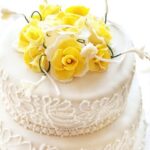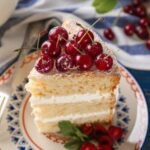Decorating a cake can be a fun and rewarding experience, especially for beginners looking to try their hand at this creative hobby. Whether you want to impress friends and family with beautiful designs or simply enjoy the process of transforming a simple cake into a work of art, cake decoration offers endless possibilities for creativity. In this article, we will explore the importance of cake decoration and why it can be such an enjoyable activity for beginners.
Cake decoration is not just about making a plain cake look visually appealing; it also plays a crucial role in enhancing the overall taste and presentation of the dessert. Beautifully decorated cakes are often the centerpiece of special occasions such as birthdays, weddings, and anniversaries. They create a sense of celebration and joy, making any event more memorable.
For beginners, cake decorating can be a fulfilling hobby that allows them to unleash their creativity and experiment with various techniques. It provides an opportunity to express oneself artistically by learning how to effectively use different colors, patterns, and textures. Plus, it’s an incredibly satisfying feeling when you see your creation come together and receive compliments from others.
In the following sections, we will delve deeper into the world of cake decoration, starting with the essential tools and equipment needed to get started. We will then guide you through choosing the right cake base, preparing it for decorating, exploring basic frosting techniques, piping decorations with different tips and tricks, working with fondant, adding finishing touches, troubleshooting common issues that may arise during the process, and finally encouraging you to have fun while continually learning and improving your skills.
So let’s get started on this exciting journey of cake decoration.
Tools and equipment needed
Cake decorating requires specific tools and equipment to achieve professional-looking results. As a beginner, it’s important to have the right tools at your disposal to make the process easier and more enjoyable. Here is a comprehensive list of essential tools and equipment needed for cake decorating:
- Cake Pans: A basic necessity for baking cakes. Choose pans in various sizes and shapes depending on the type of cake you want to decorate.
- Mixing Bowls: You’ll need mixing bowls in different sizes for preparing cake batter and frosting.
- Spatulas: Offset spatulas are essential for smoothing icing, spreading filling, and creating clean edges.
- Pastry Bags: These bags are used for piping frosting onto the cake. Disposable plastic bags or reusable cloth bags can both be used, depending on personal preference.
- Piping Tips: There are countless piping tips available that create different decorative designs. Start with basic round and star tips, then gradually expand your collection.
- Turntable: A rotating turntable makes it easier to frost and decorate the sides of a cake evenly.
- Cake Leveler or Serrated Knife: These tools are used to level off the tops of cakes or torte them into multiple layers.
- Fondant Rolling Pin and Mat: If you plan to work with fondant, invest in a rolling pin specifically designed for it, as well as a non-stick mat to prevent sticking.
- Cake Boards or Cardboards: These provide stability when moving or transporting decorated cakes.
- Decorating Comb or Scraper: Used to create textured patterns on the sides of the cake.
- Food Coloring: Gel-based food coloring produces vibrant colors without altering the consistency of frosting or fondant.
- Edible Decorations: Sprinkles, edible pearls, glitter dust, and other decorations add flair to your creations.
- Cake Stand or Plate: Display your finished masterpiece on an attractive cake stand or plate.
Remember, these are just the essentials to get you started. As you gain more experience and confidence, feel free to explore additional tools and equipment that can elevate your cake decorating skills.
Choosing the right cake base
Choosing the right cake base is a crucial aspect of cake decoration. Different types of cakes have different textures, flavors, and structures that can affect the overall outcome and ease of decorating. When it comes to beginners, certain types of cakes are more forgiving and easier to work with. Here are some popular cake options that are well-suited for beginners:
Butter Cake
Butter cakes are a classic choice for beginners due to their sturdy yet moist texture. They have a rich flavor that pairs well with various frosting options. This type of cake is versatile and can be easily flavored or filled with fruits, chocolate chips, nuts, or other additions to add extra excitement to the decoration.
Sponge Cake
Sponge cakes have a light and fluffy texture, making them an ideal canvas for delicate decorations such as piping or fondant work. They absorb flavors well and can be paired with a variety of fillings and frostings. It’s essential to ensure that sponge cakes are properly leveled and cooled before starting the decorating process.
Boxed Cake Mix
For beginners looking for convenience without compromising on taste or quality, boxed cake mixes can be an excellent option. These mixes provide consistent results and come in various flavors like vanilla, chocolate, red velvet, etc., which make them suitable for different occasions or themes.
It’s important to remember that regardless of the cake type chosen, proper handling and preparation will have a significant impact on the final outcome. Beginners should focus on practicing basic techniques on simpler cake bases before venturing into more complex designs. With time and experience, they can gain confidence and experiment with different cake varieties to create stunning masterpieces.
By selecting the right cake base suited for their skill level, beginners can start their journey into cake decoration with greater success and enjoyment.
Preparing the cake
One of the most crucial steps in cake decoration is properly preparing the cake for decorating. This includes cutting and leveling the cake, as well as ensuring it is ready to be frosted and decorated. Follow these step-by-step instructions to prepare your cake for a beautiful and professional-looking decoration.
- Start by allowing your cake to cool completely after baking. This will ensure that it is firm and easier to work with during the preparation process.
- Once the cake has cooled, place it on a clean and stable surface. Use a long serrated knife or a cake leveler to carefully cut off any domed or uneven top of the cake. This will create a flat surface for icing and decorating.
- After leveling the cake, it’s important to remove any loose crumbs from its surface. You can do this by using a pastry brush or a clean kitchen towel to gently brush away the crumbs.
- Next, place your leveled cake on a cardboard circle or a serving plate that is slightly larger than the size of your cake. This will make it easier to transfer and handle throughout the decorating process.
- If you plan on adding multiple layers to your cake, now is the time to carefully slice it in half horizontally, creating two equal layers. Use a long serrated knife or a layer-cake slicer for an even cut.
| Cake Preparation Tools | Quantity |
|---|---|
| Serrated Knife | 1 |
| Cake Leveler | 1 |
By following these step-by-step instructions for preparing your cake, you’ll have a smooth and even surface ready for frosting and decoration. Taking the time to properly cut, level, and prepare your cake is an essential step in the cake decorating process, as it ensures a professional and polished final result.
Basic frosting techniques
Frosting is an essential component of cake decoration, as it not only adds flavor but also serves as a canvas for various designs and decorations. There are several types of frostings that beginners can experiment with, each offering its own unique texture and taste.
One common frosting type for beginners is buttercream frosting. This versatile frosting is made by combining butter, powdered sugar, and flavorings such as vanilla or chocolate. Buttercream can be easily colored using food coloring gel for added visual appeal.
It is perfect for smooth icing, giving a clean and polished look to the cake’s surface. To achieve a smooth icing finish, start by crumb coating the cake with a thin layer of buttercream to seal in any loose crumbs. Once the crumb coat has set, apply a thicker layer of buttercream and use an offset spatula to evenly spread it across the cake.
Another beginner-friendly technique is creating rosettes with buttercream frosting. Rosettes are simple flower-like shapes that can be piped directly onto the cake using a piping bag fitted with a star tip. Begin by holding the piping bag at a 90-degree angle to the cake’s surface and apply even pressure while moving your hand in a circular motion.
This will create beautiful swirls that resemble roses. Practice on a piece of parchment paper until you feel comfortable before attempting to pipe directly onto the cake.
Piped borders are another way to add decorative touches to cakes. Using a small round or star tip, fill a piping bag with buttercream frosting and apply gentle pressure while moving your hand along the edge of the cake. This will create elegant borders such as shells or dots. Experiment with different tips and techniques to find your preferred border style.
By mastering basic frosting techniques like smooth icing, rosettes, and piped borders, beginners can elevate their cake decoration skills and create stunning designs on their cakes. Don’t hesitate to experiment with colors, textures, and designs to develop your own unique cake decorating style. With practice and patience, you’ll be able to create beautifully decorated cakes that will wow your friends and family.
Introduction to piping
Piping is a versatile and essential technique in cake decoration. It allows you to create beautiful and intricate designs on cakes, cupcakes, and other baked goods. In this section, we will introduce beginners to the art of piping, including the necessary tools, different tips or nozzles for piping bags, and how to pipe basic decorations like stars, shells, and dots.
Tools for Piping
Before getting started with piping, it’s important to have the right tools on hand. Here is a list of essential tools for piping:
- Piping Bags: These are cone-shaped bags made of plastic or cloth that hold the frosting or icing. They come in different sizes and can be disposable or reusable.
- Couplers: Couplers allow you to easily change the tips without changing the bag of frosting. They consist of two parts – a base that fits inside the bag and a ring that holds the tip in place.
- Piping Tips/Nozzles: There are various types of tips available for different decorating techniques. For beginners, start with basic round tips for creating dots or outlines and star tips for making stars or flowers.
Basic Decorations: Stars, Shells, and Dots
Once you have your tools ready, it’s time to practice some basic piping decorations:
- Stars: To pipe stars, use a star tip (such as Wilton 1M) attached to your piping bag filled with frosting. Hold the bag perpendicular to the surface and apply even pressure while squeezing. Start from the center and move outward in a circular motion.
- Shells: Shells add texture and depth to cake borders or other decorative elements. Use a shell tip (such as Wilton 18) attached to your piping bag filled with frosting. Hold the bag at a slight angle against the surface and squeeze while moving back and forth in a wave-like motion.
- Dots: Dots are simple yet effective decorations. Use a round tip (such as Wilton 12) attached to your piping bag filled with frosting. Hold the bag perpendicular to the surface, and squeeze gently to create small or large dots.
Remember, practice makes perfect when it comes to piping. Start with these basic decorations and gradually explore more advanced techniques as you gain confidence and skills. Don’t be afraid to experiment and have fun with different designs and colors.
Applying fondant
Applying fondant is a popular technique in cake decorating that allows for a smooth, polished finish and endless creative possibilities. While it may seem intimidating to beginners, with the right techniques and practice, anyone can master the art of working with fondant. Here is a step-by-step guide on how to apply fondant to your cakes:
- Color the fondant: Before you start working with fondant, decide on the color or colors you want to use. You can either purchase pre-colored fondant or use gel food coloring to tint white fondant. Remember to start with a small amount of coloring and gradually add more until you achieve the desired shade.
- Knead and roll out the fondant: Dust your workspace with powdered sugar or cornstarch to prevent sticking. Begin by kneading the fondant in your hands until it becomes soft and pliable. Then, use a rolling pin to roll it out into a thin, even circle larger than the size of your cake.
- Apply the fondant to the cake: Gently lift the rolled-out fondant using a rolling pin or your hands and carefully drape it over the cake. Start smoothing out the top surface using gentle strokes from the center outward, being careful not to stretch or tear the fondant. Gradually work your way down along the sides of the cake, smoothing and adjusting as needed.
- Trim excess fondant: Once you have covered the entire cake with fondant, use a sharp knife or pizza cutter to trim off any excess around the base of the cake. This will give your cake a clean, finished look.
- Create shapes and accents: Fondant allows for endless possibilities when it comes to creating shapes and accents for your cake design. You can use fondant cutters to make flowers, leaves, or other desired shapes. To stick these decorations onto the cake, lightly brush a small amount of water or edible glue onto the back of each piece and gently press them into place.
Remember, working with fondant takes practice, so don’t be discouraged if your first attempts are not perfect. With time and experience, you will become more comfortable and achieve better results. Now that you have mastered the art of applying fondant to your cakes, you can move on to exploring more advanced techniques such as creating intricate details and designs using molds or stencils.
Adding fondant to your cake opens up a whole new world of creativity and customization. With its smooth finish and versatility, fondant allows you to create beautiful cakes for various occasions such as birthdays, weddings, or anniversaries. So go ahead and unleash your creativity with fondant and take your cake decorating skills to the next level.
Adding finishing touches
Adding the finishing touches to a decorated cake can really elevate its overall look and make it truly unique. There are endless possibilities when it comes to adding those final decorative elements that will wow your guests. Here are some ideas for adding those special touches to your cake:
- Edible Decorations: Edible decorations are a fun and creative way to enhance the appearance of your cake. You can use edible flowers, such as pansies or violets, to add a natural and elegant touch. Other options include edible glitter, pearls, or even gold or silver leaf for a touch of luxury. Get creative and experiment with different edible decorations to find what works best for your design.
- Sprinkles: Sprinkles are a classic and easy way to bring color and texture to your cake. Whether you choose rainbow sprinkles for a fun and festive look or metallic sprinkles for an elegant touch, they can be applied all over the cake or strategically placed in specific areas. Consider using themed sprinkles for special occasions or incorporating different sizes and shapes for added visual interest.
- Writing and Custom Messages: Adding personalized messages or writing on your cake is a great way to make it more meaningful and memorable. Use piping bags with small round tips filled with contrasting colored frosting or royal icing to write names, wishes, or celebratory messages directly on the cake’s surface. You can also use stencils or cookie cutters as guides for creating perfectly shaped letters.
Remember that the key is not to overcrowd the cake with too many decorations – less is often more. Be selective with which finishing touches you choose so that they complement the overall design rather than overwhelm it.
By following these tips for adding finishing touches, you’ll be able to create stunning cakes that not only look amazing but also taste delicious. Don’t be afraid to let your creativity run wild and have fun experimenting with different decorative elements-your cakes will surely be a hit at any celebration.
Troubleshooting tips
Problem: Crumbs in the frosting
When beginners start decorating cakes, one common issue they may encounter is getting crumbs in their frosting. This can happen when the cake is not properly prepared or when too much pressure is applied while spreading the frosting.
Solution:
To prevent crumbs from ending up in your frosting, it’s important to properly prepare the cake before applying any icing. Start by leveling the cake using a serrated knife and gently removing any uneven parts. Then, brush off any loose crumbs with a pastry brush before starting to frost.
If you still find that some crumbs are getting into your icing, try using a crumb coat. A crumb coat is a thin layer of icing that helps seal in any loose crumbs and prepares the cake for more frosting layers. Apply a thin layer of icing over the entire cake, let it set for a few minutes, and then proceed with adding more frosting.
Problem: Uneven frosting
Another issue beginners may face is achieving an even layer of frosting on their cakes. Uneven frosting can make the cake look messy and unprofessional.
Solution:
To achieve smooth and even frosting, it’s important to work with room temperature frosting. Cold or stiff frosting can be difficult to spread evenly and may result in an uneven finish. Letting the frosting sit at room temperature for about 30 minutes before using it will make it easier to work with.
Additionally, using an offset spatula or a bench scraper can help you create smooth and even layers of icing on your cake. Hold the spatula or scraper at a slight angle against the side of the cake and gently rotate the turntable while moving the spatula or scraper around the edge of the cake.
Problem: Piping inconsistencies
Piping decorations on a cake can be challenging for beginners as it requires control and precision. One common issue is inconsistencies in the size and shape of piped decorations.
Solution:
To achieve more consistent piping, it’s important to practice with different piping tips and techniques. Start by using a larger round tip for practicing basic shapes like dots and stars. As you gain more confidence, you can try using smaller tips for more intricate designs.
Another helpful tip is to apply consistent pressure while piping. Hold the piping bag firmly with one hand and use your other hand to guide the tip and control the flow of frosting. Practicing on a separate surface or parchment paper before piping directly onto the cake can also help improve your technique.
By understanding and addressing these common issues, beginners can overcome challenges while decorating cakes and create beautiful, professional-looking creations. Remember that practice makes perfect, so don’t be discouraged if things don’t go perfectly on your first few tries. Keep experimenting, learning from your mistakes, and most importantly, have fun with cake decoration.
Conclusion
In conclusion, cake decoration is not only an important aspect of cake making but also a fun and rewarding hobby for beginners. Through this article, we have explored the different tools and equipment needed for cake decorating, as well as the various types of cakes that are suitable for beginners to decorate. We have also provided step-by-step instructions on how to properly prepare a cake for decorating.
Furthermore, we have delved into basic frosting techniques and introduced beginners to piping bags and fondant. By following the instructions provided in this article, beginners can learn how to create smooth icing, rosettes, piped borders, and even work with fondant to add unique shapes and accents to their cakes. Additionally, we have provided troubleshooting tips for common issues beginners may face while decorating their cakes.
To further enhance your skills in cake decoration, we encourage you to practice and experiment with different techniques and designs. The more you practice, the better you will become at creating beautifully decorated cakes. Remember to have fun throughout the process and embrace creativity. If you are looking for additional resources or next steps for further learning, there are plenty of online tutorials, courses, books, and workshops available that can help you refine your skills as a cake decorator.
Frequently Asked Questions
Can you teach yourself cake decorating?
Yes, it is absolutely possible to teach yourself cake decorating. With the abundance of online tutorials, videos, and step-by-step guides available, learning cake decorating has never been easier. There are numerous resources that provide detailed instructions on various techniques such as piping, fondant work, and buttercream decoration.
It’s important to start with simple designs and gradually progress to more complex ones as you gain confidence and experience. Practice is key, so investing time and effort into experimenting with different techniques will help refine your skills over time.
What is the easiest way to decorate a cake?
The easiest way to decorate a cake is by using simple yet effective techniques that require minimal skill and equipment. One of the most approachable methods for beginners is using a basic buttercream frosting and piping it onto the cake using a star-tipped nozzle.
This allows you to create lovely rosettes or swirls with ease, which can be further enhanced by adding sprinkles or edible decorations for extra flair. Another straightforward option is spreading a smooth layer of icing over the cake’s surface and garnishing it with fresh fruit or edible flowers for an elegant touch.
How to make icing for a cake for beginners?
Making icing for a cake as a beginner can be easily accomplished by starting with a basic buttercream recipe. Begin by creaming softened unsalted butter until it’s light and fluffy, then gradually add powdered sugar (also known as icing sugar) to taste along with vanilla extract for flavoring.
To achieve the desired consistency, you may need to add small amounts of milk or heavy cream while continuing to mix until smooth. It’s essential not to rush this process; take your time in slowly incorporating the ingredients until you achieve a creamy texture that holds its shape when piped onto the cake or spread smoothly using an offset spatula.

Welcome to my blog about home and family. This blog is a place where I will share my thoughts, ideas, and experiences related to these important topics. I am a stay-at-home mom with two young children. I hope you enjoy reading it! and may find some helpful tips and ideas that will make your home and family life even better!





